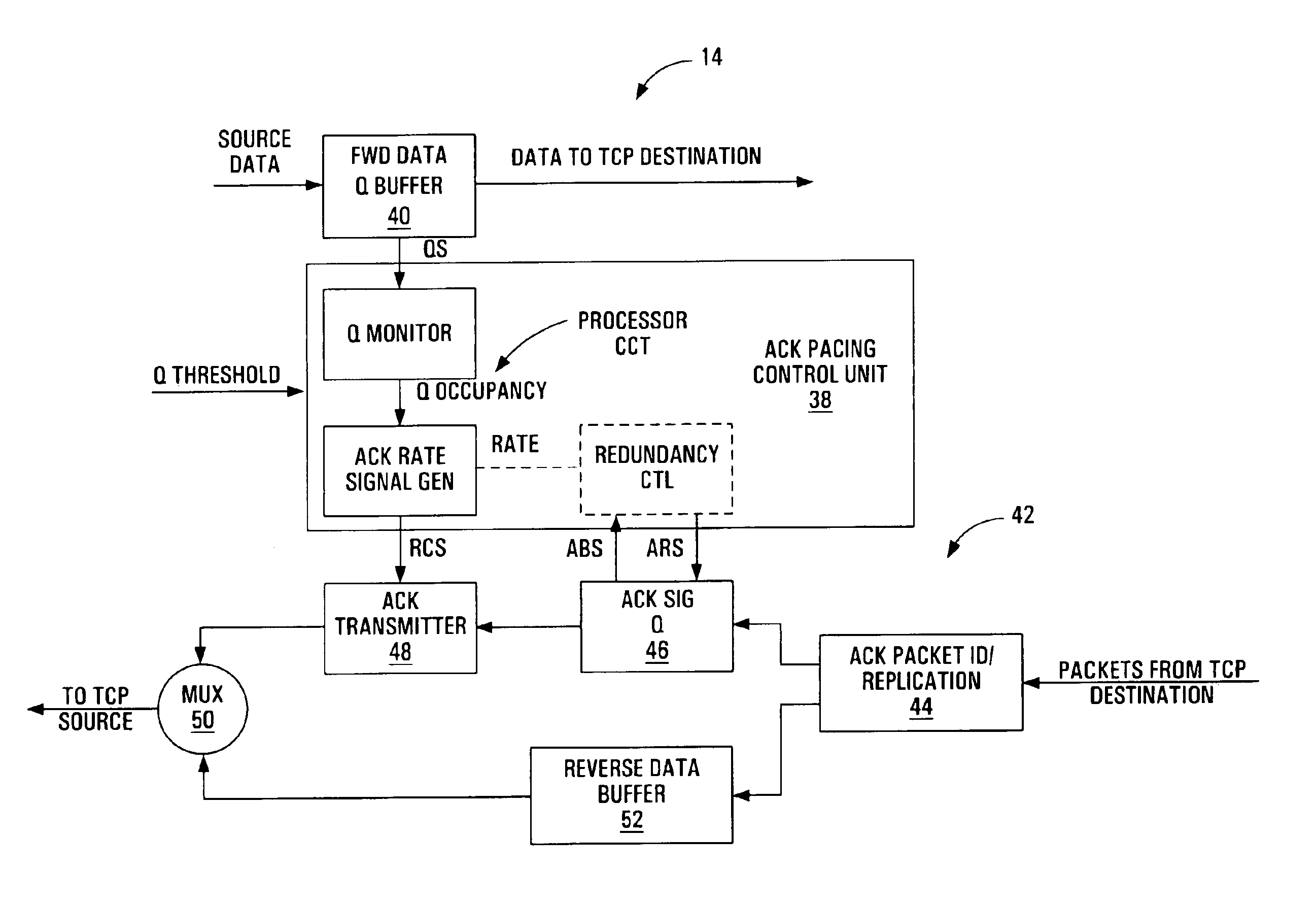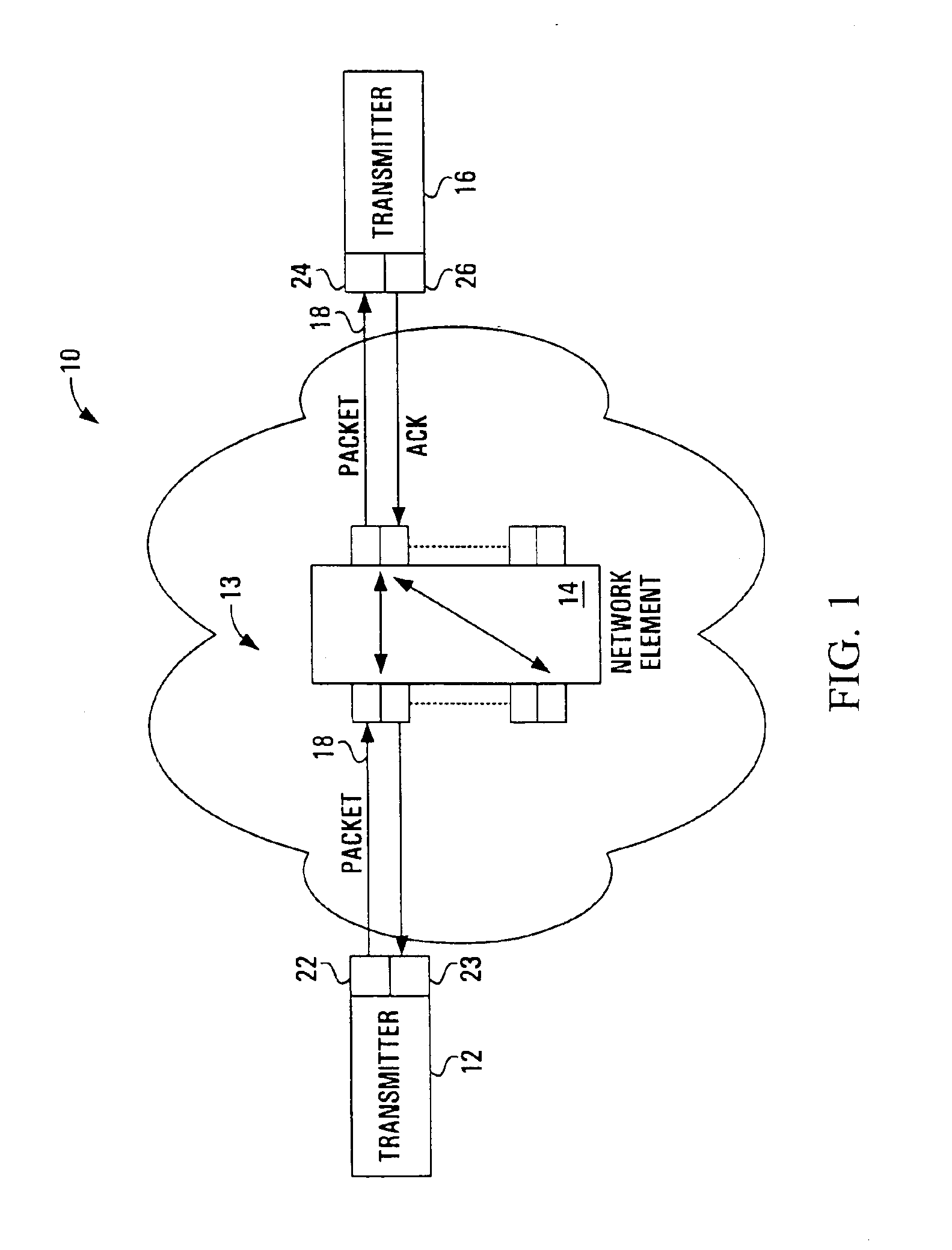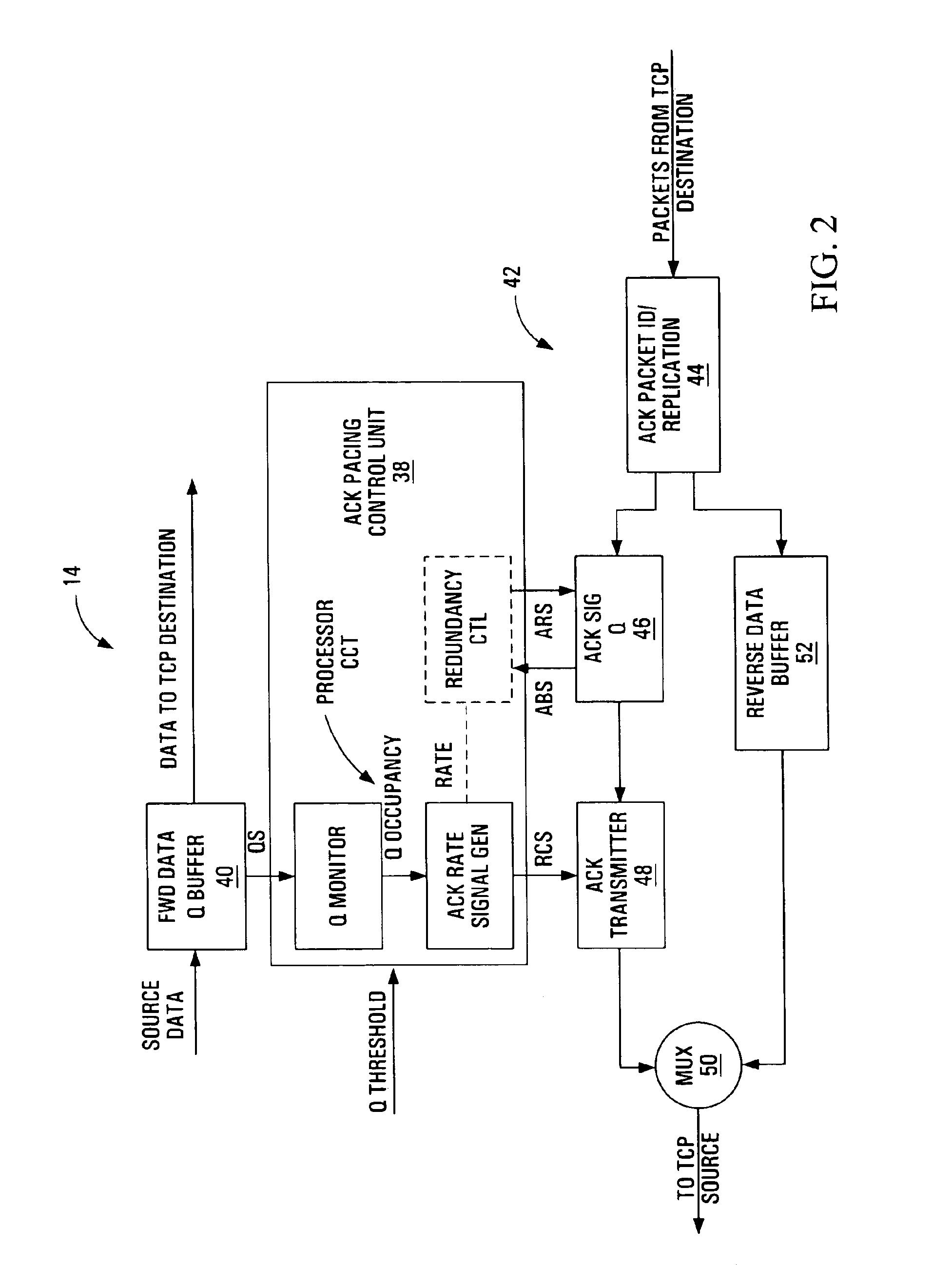Method, apparatus, media, and signals for controlling packet transmission rate from a packet source
- Summary
- Abstract
- Description
- Claims
- Application Information
AI Technical Summary
Benefits of technology
Problems solved by technology
Method used
Image
Examples
Embodiment Construction
[0036]As shown generally at 10 in FIG. 1, a packet network according to a first embodiment of the invention includes a first data transmitter 12, a network element 14 and a first data receiver 16. In general, the transmitter 12 transmits data packets in a forward direction to the network element 14, which, in turn, transmits the data packets to the receiver 16. It will be appreciated that there may be a plurality of network elements between a plurality of transmitters and a plurality of receivers, however, for simplicity only one of each is shown.
[0037]In this embodiment, the data packets transmitted by the transmitter 12 are transmitted as “forward” data packets 18, which are communicated in a forward direction i.e. from the transmitter 12 to the receiver 16. In this specification, the term “packet” is applied broadly, and contemplates any quantum of data, such as a block, a frame, a datagram, a cell, a word, a byte, or a bit, for example. In general, a transmitter 12-receiver 16 p...
PUM
 Login to View More
Login to View More Abstract
Description
Claims
Application Information
 Login to View More
Login to View More - R&D
- Intellectual Property
- Life Sciences
- Materials
- Tech Scout
- Unparalleled Data Quality
- Higher Quality Content
- 60% Fewer Hallucinations
Browse by: Latest US Patents, China's latest patents, Technical Efficacy Thesaurus, Application Domain, Technology Topic, Popular Technical Reports.
© 2025 PatSnap. All rights reserved.Legal|Privacy policy|Modern Slavery Act Transparency Statement|Sitemap|About US| Contact US: help@patsnap.com



